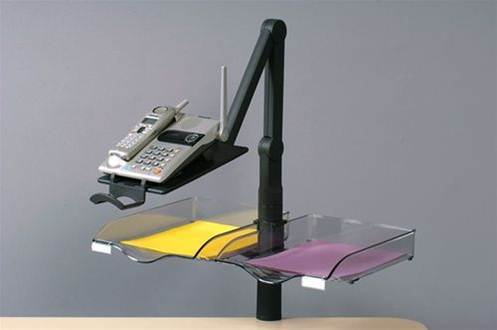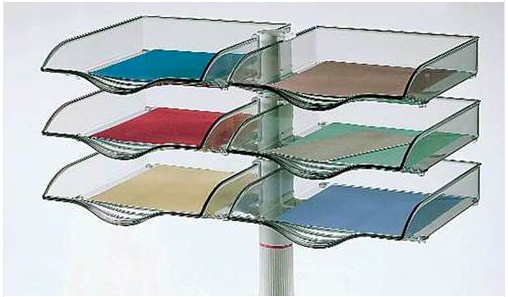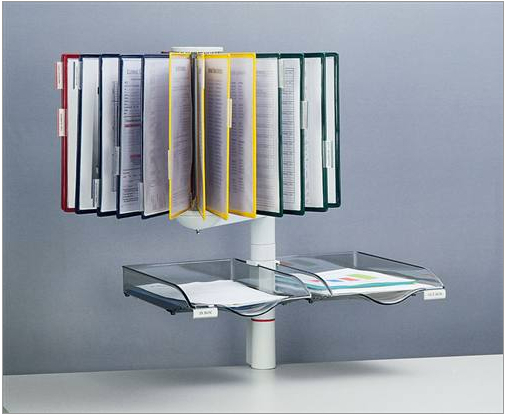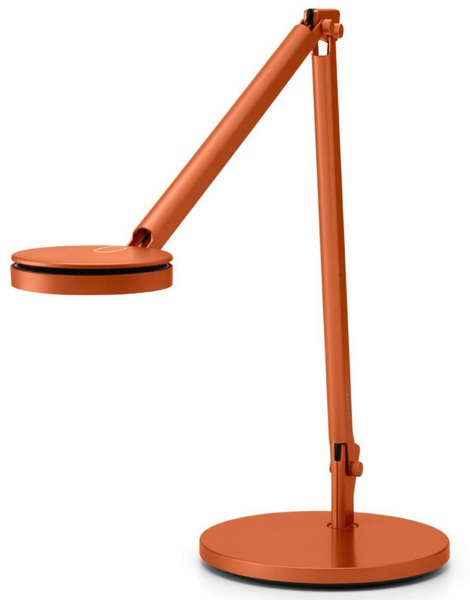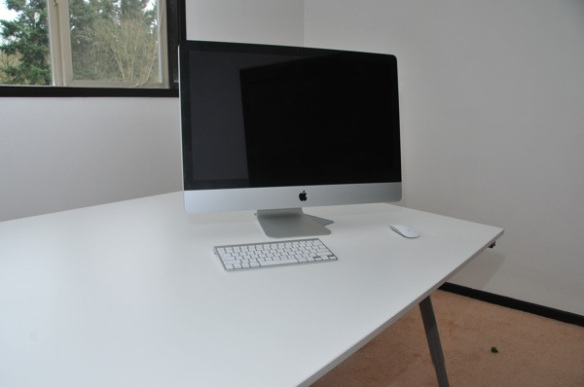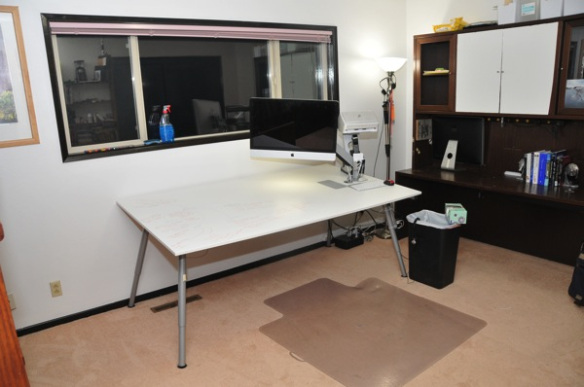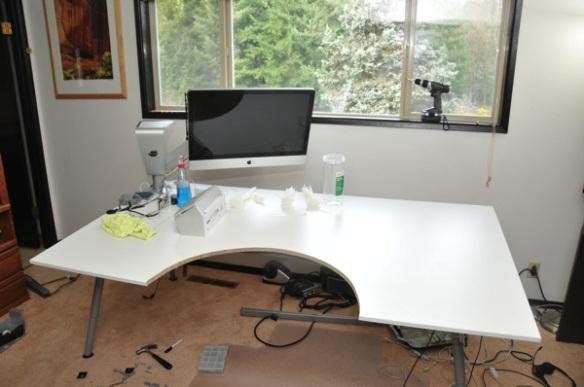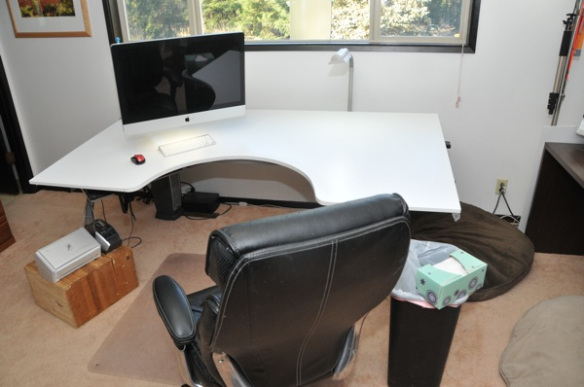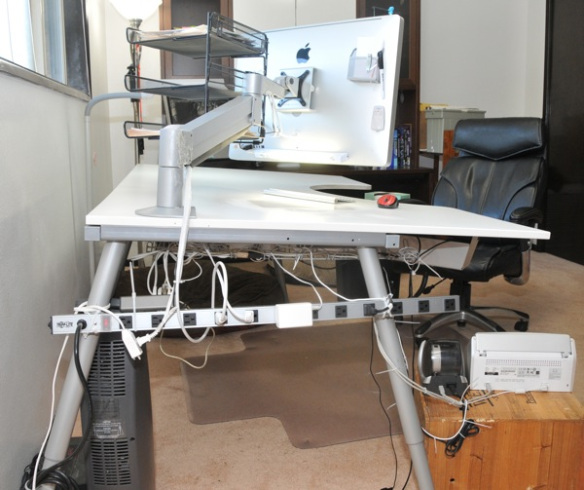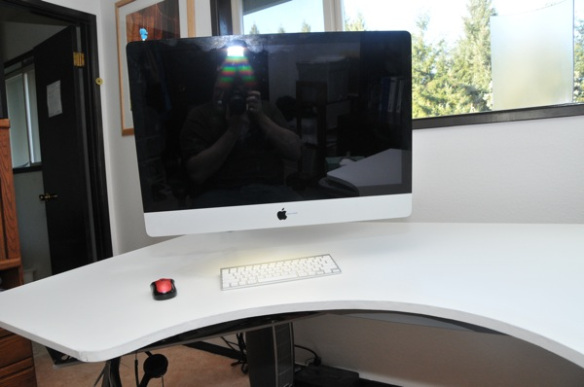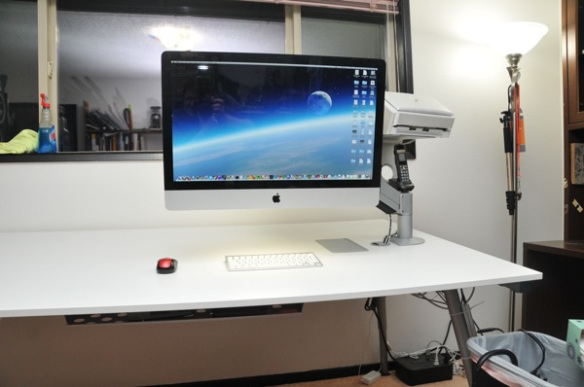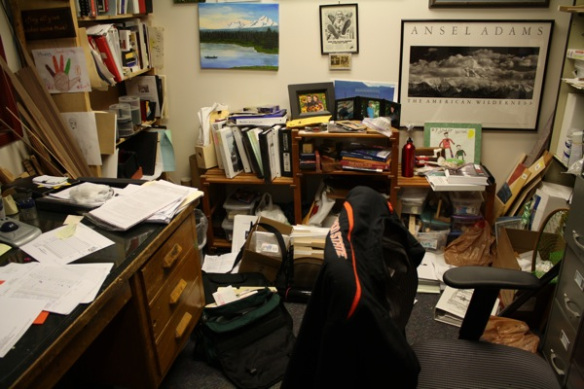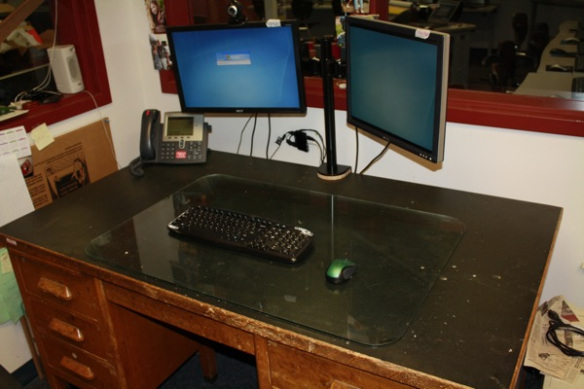Introduction
I have this high school engineering teacher friend John Niebergall. Long time readers of RestartGTD.com will remember John as the character studied in the abomination of deskolation from January of 2012. Here are John’s Getting Things Done before/after desk makeover pictures:
Well, John has embarked on something of a teaching odyssey. But before I get to that, I should point out one of John’s previous odysseys: female-only engineering classes, which you can watch on the CBS Evening News.
John was trained as a shop teacher (Oregon State, go Beavers!) but what he really teaches is engineering. Here’s a picture of the all girls class in the computer aided design lab (from the CBS story above):
John’s CAD lab was so advanced that it could certify students in Solid Works, Rhino 3D, and several other CAD packages. All this on ancient computers with tiny (40 GB) hard drives.
I met John while building a college-level experiential entrepreneurship program designed to get people to learn cad, design products, then apply customer development to refine the products until customers said “I must have this” and once the product concept was strong enough to scale, to apply accounting, sales management, etc., the normal business curriculum, so that students could emerge with a business degree and a running business. Ideally, at a profit.
Yes, this is crazy, out there, impractical, etc., etc., etc., except … it works.
A former student of mine, Garrett Staples actually succeeded in building a company: Prink Tech which you can find on the web, Facebook, Pinterest, and many other places in social media.
So Niebergall’s stuff has magic success pixie dust all over it. So much pixie dust that he should be viral. But so far, Niebergall’s magic pixie dust has not translated to virality. This morning I realized why. RestartGTD has not alerted the 100 daily readers of this blog. So without further ado, let me tell you about …
Niebergall’s Magic Pixie Dust World Tour and Odyssey De Jure
Last year John wrote an educational grant to buy a RV and fill it up with laser engravers, 3D printers, CAD work stations, vinyl cutters, etc. and then drive around Oregon to spread the gospel of fab labs in middle and high schools. John’s grant was funded … fully. And this year, he is living the dream. You can follow John’s magic pixie dust world tour on his Facebook Page
This week, John was in Sutherlin in mid-Western Oregon:
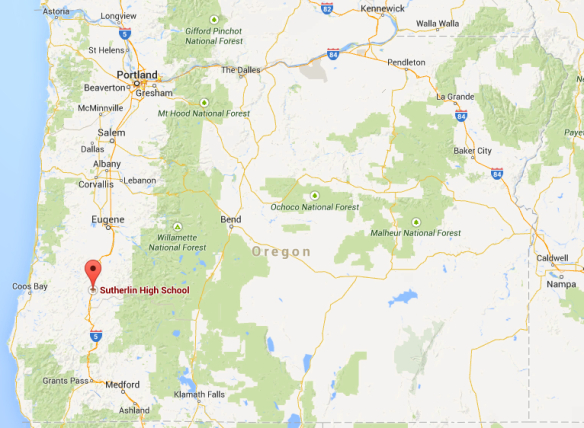
and here is a picture of the effects of the Niebergall magic pixie dust which is in a word: empowerment. You can see it in the face as people pull the first things they’ve made from a CAD program, from the vinyl cutter or 3D printer or laser engraver:
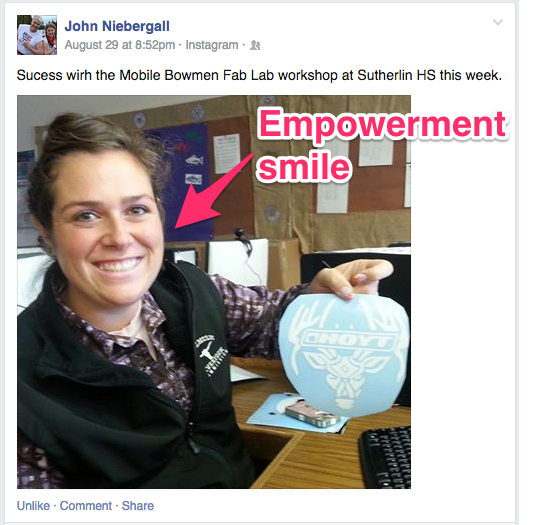
The fundamental importance of empowerment, was probably discovered by Neil Gershenfeld, a leader of the development of Fab Labs, Check out Gershenfeld’s fab lab TED presentation and his book FAB. The story of Fab Labs starts at about 10:30 in the TED video, this clip is from 11:20
So John is taking fab labs around the state of Oregon, allowing people to hands-on discover for themselves that they can change their lives, and by extension, the world.
So, check out John’s Facebook page for updates on the magic pixy dust world tour. And when rapid prototyping begins to turn the Oregon, and then the US economy around, you’ll know where it all started.
Appendix A: The Oregon Engineering Education Dream Team
John Niebergall is to going to kick my rear end if I don’t add that he is not a lone genius. There is a cadre of lone geniuses behind this story. All of which have pulled together to use fab labs to extend from shop curricula into teaching engineering proper. These people are changing the game of technical education because they have amassed a body of skill, equipment knowledge, and a world view, that is a decade ahead of college engineering and college business education.
I met John at a high school engineering teacher boot camp for rapid prototyping put on by Pat Kraft (and the NSA) of Portland Community College - Sylvania campus. Pat is a behind the scenes guru of additive manufacturing, rapid prototyping, and change management.
Don Domes, another high school engineering teacher who has worked behind the scenes to get the state of Oregon to think in terms of fab labs changing the economy. Don’s relentless, skilled, and refreshingly idealistic advocacy for technical empowerment has produced successful students, programs, and a communion of kindred minds for high school lone geniuses to plot improving technical education.
Don Domes image from Oregonlive.com
Another lone genius is Tim Morley of Century High School in Beaverton Oregon. Tim is a first class idealist, protecting himself under a thick skin of cynicism. But long time readers of RestartGTD.com know that cynicism is nothing more than frustrated idealism.
Co-conspirator with the Niebergall, Kraft, Domes gang, Tim is a specialist in finding the skeleton keys to unlock high school minds to become interested in learning. If you talk to Tim, ask him about tasking his students to cut precise dimensions with a laser. Little things matter. Little things like “How wide is the laser beam?” :-)
Tim Morley from Ainsworthoriginals.com
Paul Reetz is the final person I’ll call out here. Paul teaches math or more accurately, he tricks the students into teaching each other math with an amazing collaborative math curriculum. Paul coaches a robotics team, has put together an amazing welding curriculum, and was the most difficult person to find a picture of. Somehow, no surprise. Paul is all about students.
If you talk to Paul, ask him about how his students make skate boards and wheels for their skate boards. When touring high schools while building my entrepreneurship program, I was continually surprised. Every high school is unique. And every high school was way more advanced than I expected. Paul’s choice of a problem that his students love, skate boarding, and his progressive development of a fab lab that allowed experimentation around student enthusiasms, were transformational. Layering wood, carbon fiber, and whatever other materials the students wanted to try, into a skate board deck, blew my mind.
Paul Reetz
Source: http://meekarts.com/robotics/team.html
The conspiracy to take engineering education to the next level despite falling funds, discouragement, a bad economy, etc. is much larger than just these people. But these should give you an idea how behind the scenes deep embers of burning idealism can bring together amazing approaches to education, and ultimately, amazing results.
bill meade



